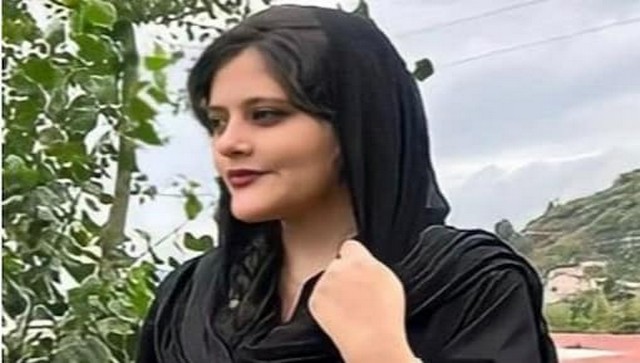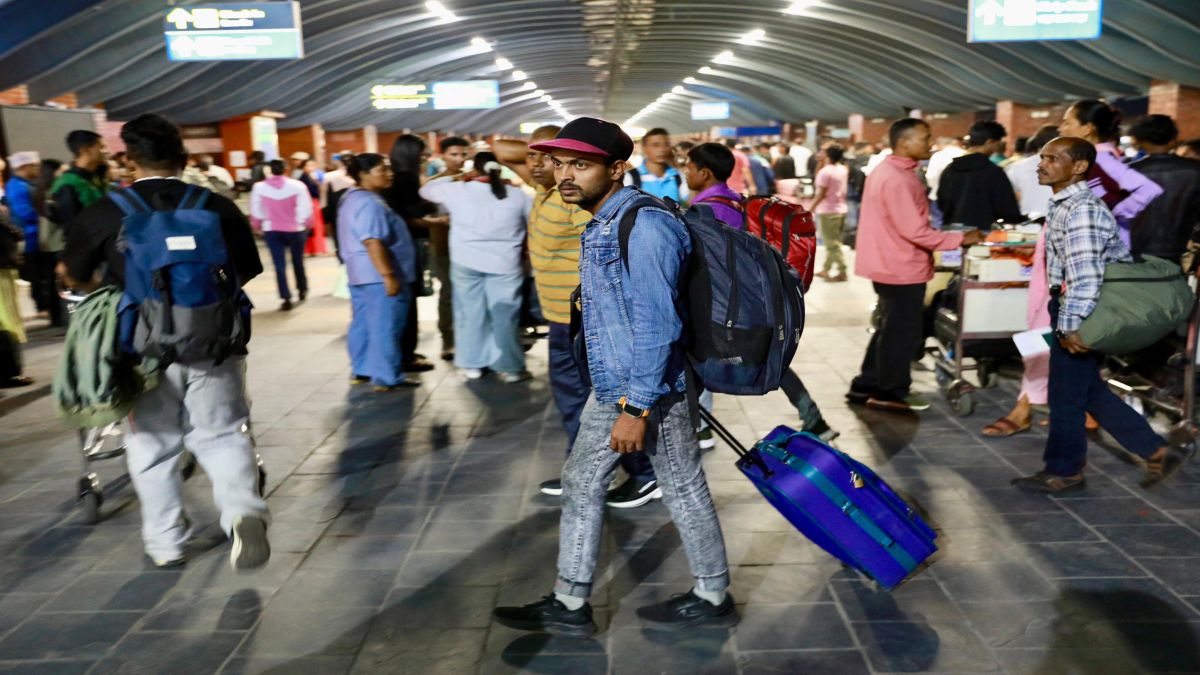The death of a 22-year-old has led to women across Iran posting videos of themselves on social media cutting their hair and burning their hijabs. Mahsa Amini slipped into a coma and died while in police custody in Tehran, state media reported on Friday. Amini was detained earlier this week by the so-called “morality police” after officers apparently found fault with her headscarf, or hijab. The headscarf has been compulsory for women in Iran since after the 1979 Islamic Revolution and members of the morality police enforce the strict dress code. While police have claimed Amini suffered a heart attack, pro-reform news websites quoted an uncle of Amini as saying she had no history of heart disease. Let’s take a look at who she was, what happened and how women are protesting: Who was she? What happened? As per BBC, Amini was an ethnic Kurd who was from the western city of Saqez. She was visiting the capital Tehran with her family when she was detained on Tuesday. As per BBC, Amini was detained outside a metro station in Tehran by the morality police. They accused her of breaking the law requiring women to cover their hair with a headscarf, and their arms and legs with loose clothing.
Witnesses claimed Amini was beaten while inside a police van that took her to a detention centre.
However, police claimed Amini suffered “sudden heart failure” while waiting to be “educated” alongside other women at the facility. She was declared dead by state television on Friday after having spent three days in a coma. Shortly after, a crowd gathered outside the Kasra hospital in central Tehran. As per Al Jazeera, police released footage showing Amini rising to talk to a female “expert” at the centre. The footage then shows Amini holding her head and collapsing. The website Fars quoting an unnamed source as reporting that Amini suffered from epilepsy and diabetes and had a brain tumour operation when she was five. But her family has rebuffed such claims, saying she was perfectly healthy with no pre-existing conditions. On Saturday, the interior minister claimed Amini “apparently had previous physical problems”, as per BBC. But her father told pro-reform news outlets on Sunday that she was “fit and had no health problems”. He added that his daughter had suffered bruising to her legs and claimed that the CCTV footage showed an “edited version” of events. President Ebrahim Raisi ordered the interior minister to open an inquiry into Amini’s case. Official state news agency IRNA reported Sunday that Raisi promised the family in a phone call that he would follow up the case, telling them “your daughter is like my own daughter and I feel like this incident happened to one of my own relatives.” The head of the Tehran medical examiner’s office on Saturday told state television that investigations into the cause of death would take up to three weeks to complete. How are women are protesting? Iranian women are burning their hijabs and cutting their hair on social media, many of them using the term #Mahsa_Amini which is trending both in Iran and in other countries. Masih Alinejad, an Iranian journalist and activist, tweeted a compilation of the of several videos with the caption, “Iranian women show their anger by cutting their hair and burning their hijab to protest against the killing of #Mahsa_Amini by hijab police.” “From the age of 7 if we don’t cover our hair we won’t be able to go to school or get a job. We are fed up with this gender apartheid regime,” Alinejad added.
The video has more than five million views thus far.
[caption id=“attachment_11287561” align=“alignnone” width=“640”] On social media, videos of the Iranian women’s protests have been spreading amid growing outrage. Image courtesy: @AntonStruve[/caption] As per Al Jazeera, Amini’s funeral Saqez saw hundreds turn out and then protest in Kurdistan province and then demonstrated in front of the governor’s office. As per BBC, crowds chanted “death to the dictator”, a phrase often hurled at Iran’s Supreme Leader, Ayatollah Ali Khamenei. Kurdish human rights group Hengaw said at least 38 people were injured by live rounds or rubber bullets, five of them critically, as per the report. Protesters were also held in Sananda, which authorities dispersed using tear gas, as per Al Jazeera.
People of another city Sananda joined the people of Tehran and Saghez to protest against the killing og #Mahsa_Amini by hijab police.
— Masih Alinejad 🏳️ (@AlinejadMasih) September 17, 2022
People are frustrated and they want to be heard.#مهسا_امینی pic.twitter.com/Yit2y6qXFH
Students also protested in support of Amini at the University of Tehran on Sunday, and student groups have called for demonstrations at several other universities. Iran’s supreme leader, Ayatollah Ali Khamenei, has supported a softer attitude toward women who do not comply with the official dress code. But hard-liners have called for harsh punishment and even lashes, arguing that allowing women to show their hair leads to moral decay and the disintegration of families. The judiciary has in recent years urged people to inform on women who do not wear the hijab. Since 2017, after dozens of women publicly took off their headscarves in a wave of protests, the authorities adopted tougher measures.
Amini’s case has drawn condemnation from reformist newspapers, Iranian celebrities, athletes and other public figures.
The people are shocked and outraged by what happened to Mahsa Amini," reformist publication Etemad noted, stating that the country has suffered “multiple instances of violence by the morality police”. The moderate Jomhouri-e Eslami daily warned against “social fragmentation” triggered by the “violent behaviour” of the unit’s officers. Prominent Iranian lawyer Saeed Dehghan described Amini’s death as a “murder”, saying she had suffered a blow to the head which had caused the base of her skull to fracture. Former pro-reform president Mohammad Khatami said the behaviour of the morality police was a “disaster” while outspoken politician and former lawmaker Mahmoud Sadeghi called on Khamenei to speak publicly about Amini’s case. Popular former soccer player, Ali Karimi, tweeted that while children of high-ranking officials are leaving the country, “our children are dying.” Hossein Mahini, another former soccer player, said in a tweet, addressing the morality police: “We hate you.” The US special envoy for Iran, Robert Malley, tweeted that Amini’s death “in custody for an ‘improper’ hijab is appalling.” He added: “Those responsible for her death should be held accountable.” Amini’s death comes amid growing controversy both inside and outside Iran over the conduct of the morality police, known formally as the Gasht-e Ershad (Guidance Patrol). Activists accuse Iran of being in the throes of a major crackdown that is affecting all areas of society, including a new push against the Bahai religious minority, death sentences for gays, a surge in executions and arrests of foreign nationals.
In July, a video of a woman standing in front of one of the force’s vans pleading for her daughter’s release went viral on social media.
Impact Shorts
More ShortsThe veiled woman kept holding on to the van as it pulled off, only being thrown clear after it gathered speed. Also in July, a young Iranian woman, Sepideh Rashno, disappeared after becoming involved in a dispute on a Tehran bus with another woman who accused her of removing her headscarf. She was held by the Revolutionary Guards and appeared on television in what activists said was a forced confession before being released on bail in late August. The head of the New York-based Center for Human Rights in Iran, Hadi Ghaemi, described her death as a “preventable tragedy”. “The government in Iran is responsible. She was arrested under the guise of the state’s discriminatory forced-hijab law and died in state custody,” he said. Raisi plans to travel to New York for the UN General Assembly next month where he is set to face intense scrutiny over Iran’s human rights record. [caption id=“attachment_11103431” align=“alignnone” width=“640”] Iranian President Ebrahim Raisi speaks in a news briefing at the Saadabad Palace in Tehran, Iran, on 11 June, 2022. AP File[/caption] “Raisi will be given a platform in New York to freely address the world while his government criminalises free speech and stamps on human rights at home,” said Ghaemi. However, some of the more conservative media outlets sought to push back against the barrage of criticism. The government daily Iran newspaper accused reformists of “exploiting public sentiments by using an unfortunate incident to incite the nation against the government and the president”. “Nevertheless, the publication of images of this incident by the police has stopped opportunists from exploiting it,” the publication argued. With inputs from agencies Read all the
Latest News ,
Trending News ,
Cricket News ,
Bollywood News , India News and
Entertainment News here. Follow us on
Facebook,
Twitter and
Instagram.


)

)
)
)
)
)
)
)
)



